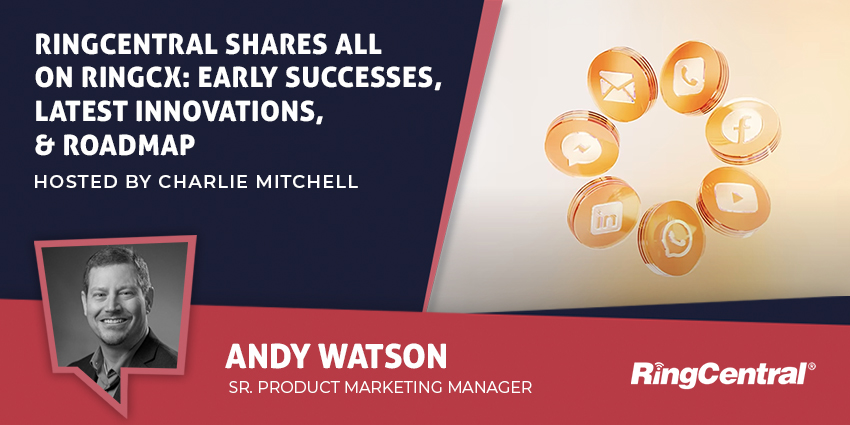The year 2020 brought about many things, the major one being COVID-19. It was also the year of facemasks, social distancing and hand sanitiser. But there was, as we look back in hindsight, brilliant aspects to the year that will go down in history as one of the worst in decades. AI is undoubtedly a positive aspect of 2020. But despite the surge in businesses all scrambling to adopt it, keen to pave a way to their recovery out of the pandemic, many are sadly not learning lessons from the year COVID struck changing the face of businesses worldwide.
With that in mind, CX Today welcomes Wavenet’s Head of Contact Centre, Johnathan Zemlik, to discuss in an exclusive interview why for businesses to get the best out of AI, bots need to have the human touch.
“We see lots of suppliers stepping up to the plate to extol the benefits of artificial intelligence and declare the 2020s the decade of AI. The truth is, it can be, but bringing that change is harder than some suppliers want to admit. AI must be applied with long-standing principals of customer experience (CX),” Zemlik begins.
He goes on to explain that the customer journey doesn’t just start with the contact centre where AI is being implemented, it starts with an understanding of the actual customers contacting them.
He adds: “The truth is the toolset of AI-enabled automation has been around for a long time. In this context, we would advise you as the reader to see it as an extension of traditional IVR and self-service technology, where the goal is to automate interactions where and when we can’t automate them to screen them into the correct ACD queue for agents to manually intervene.
“It’s not all about the customer either, AI automation must benefit everyone. It shouldn’t be viewed as a blunt tool to replace agents, it should be considered as part of a holistic toolkit to support and upskill everyone across a business.”
Automate Where Appropriate
Zemlik continues to explain that in order for AI to successfully benefit a company its offerings must be weighed up and thought over before its rollout.
He explains: “With a view to how much of process do you automate. Let’s go back to basics, In 2000 Jim Sterne and Matt Cutler wrote a paper called ‘E-Metrics-business metrics for the new economy’ where they breakdown the key elements of the customer lifecycle.
Each stage has a positive outcome where the customer takes the next step in the cycle towards customer loyalty or a negative outcome where the customer will drift to another provider. For every customer-facing process this must be considered with the question, would AI enablement improve this process?”
Zemlik adds that a customer’s needs when engaging with a business is to be understood, listened to and of course, recognised.
He says: “I want empathy and I won’t get that from a chatbot or automated voice service. That isn’t going to endear me to a brand or firm.
“However, if I want to check the status of a delivery or an outstanding amount on a credit arrangement, I want that information as quickly as possible. So before automating a process it should be considered in its own context.”
Effective Automation
Zemlik provides insights into how the design of an AI-automated process can be broken down into its key parts. These are what information the customer is asking for, how to obtain that data and how to relay it to the customer.
He adds; “When we understand that, we can use AI-enabled tools to design this process in an optimised way.
“We can use AI-enabled automation tools to understand what the customer is asking, find the information within the system and then relay it back to them either as text to speech or as a chatbot.
“When doing this we want it to sound like it’s coming from a real person, this is what Natural Language Processing is all about, allowing automated systems to communicate more like agents. This allows us to create swift precise interactions that feel more real even though customers know its automated, they don’t mind as the customer experience is great.
“However, even when we design these processes, we always want to avoid the risk of a digital cul-de-sac meaning a breakout to a real agent is always a button press away.”
AI Enablement as Dynamic an Option
Zemlik adds another variable into the debate on whether to automate or not automate a process: availability. This relates to the all-important question of when it’s best for AI to take over from a live agent.
He says; “While there are some interactions where we’d rather have agents involved their availability is a finite resource. There will inevitably be times such as call spikes where we can’t put people through to an agent. Here is where we should offer AI automation as an option.
“The best example of this is for me is payments. I recently worked with a customer who has call spikes for a week every month towards their payment’s deadline. Their ethos means they want to allow those paying them to talk to an agent so they can have a personalised interaction, but during a spike in calls, that’s not always possible. So here it was established that automation was appropriate in periods of high demand.
“This is where AI-enabled dynamic routing is the perfect answer. In summary, to create a great customer journey where interaction remained at the heart of CX when agents were available the customer would always be put through to an agent, but when the agents weren’t available the option of an automated payment would appear in the queue as a breakout after a minute, followed by the option of an intelligent call-back 30 seconds after.
“In times when the queue was above a certain threshold, the automated option was offered immediately followed by the call back option to prevent high wait times. This is a good example of carefully considered AI enablement where it allows us to present choices to the customer during a process where they need to interact with a business but the interaction with people remained the core of CX.”
And What About Automating a Whole Process?
The simple answer, Zemlik says, is no. Businesses should not have to automate a process end-to-end, especially when introducing AI automation into customer experience for the first time.
He explains: “Most Chat-bot products and IVR solutions in the market began by screening and sorting interactions and delivering them to the right queues for agents to handle. Automating the first few parts of interaction can also be a very powerful tool to improve productivity and support your existing agents to do their jobs better.
“This can range from the long-used CTI where we pop the customers CRM record based on the number of email address they have called on, to using sentiment analysis and AI-enabled knowledge bases to provide an agent with a brief on an angry customer with a suggested solution to their problem.
“The benefits to the agent and the customers are reduced average handle time, improved chances of first contact resolution and personalised interaction. This results in a more productive agent and a customer more likely to stay loyal.”
AI Automation Isn’t Just Customer-facing
Zemlik says that when talking about AI Automation too many people focus on automating customer interaction. He believes though, that some of the most valuable gains to be made by the adoption of AI technology will take place in the teams around the contact centre. Particularly, in Quality Assurance, Compliance and Fraud Detection, he adds.
“The contact centre is the focal point for data within businesses where customers are linked to a business’s process. Every call, email, webchat, SMS and social media interaction is generating data.
“Consider that the US Library of Congress’s 39 million books and 73 million manuscripts equals around 15 TB of data, IBM estimate some 2.5 quintillion bytes of data are produced every single day. This means your Quality Assurance and Compliance Teams will soon have more data than they can ever use if don’t already.
“Without the support of AI, this will make finding issues like a needle in a haystack. However, by using AI tools like speech to text we can use tools such as speech analytics to look through this vast pool of data and flag problematic recordings to the QA team for analysis.”
Zemlik says this will allow companies to find the conversation where agents can improve and support personalised development plans. This, he adds, will help agents to develop new skills and offer an enhanced customer service.
Zemlik continues: “AI can also be used to automatically analyse and index big data by which we mean, sorting and organising your recorded interactions based on subject and sentiment. This can then provide valuable insights into why your customers are contacting you. This can be used to decide how to rebuild problematic processes where you can use customer-facing AI tools to provide an enhanced customer journey.
“Finally, AI can be used to tell what parts of your data mine you can keep and what you can delete. Storing large amounts of data is not only risky from the compliance point of view, but it’s also very expensive on consumption-based public cloud models. Let AI automation tell you what you need to keep and give your Chief Information Security Officer a break by reducing your data retention period secure in the k knowledge you understood the big picture.”
Zemlik concludes that AI must have humane qualities to be a worthwhile investment for businesses. AI cannot be relied upon fully to do the job and should instead work alongside live agents at the contact centre. Too many businesses are making the fatal error of pushing their entire strategy onto AI, and while it works for some, many others are learning despite it being programmed to the contrary, AI simply cannot achieve everything a customer wants.






